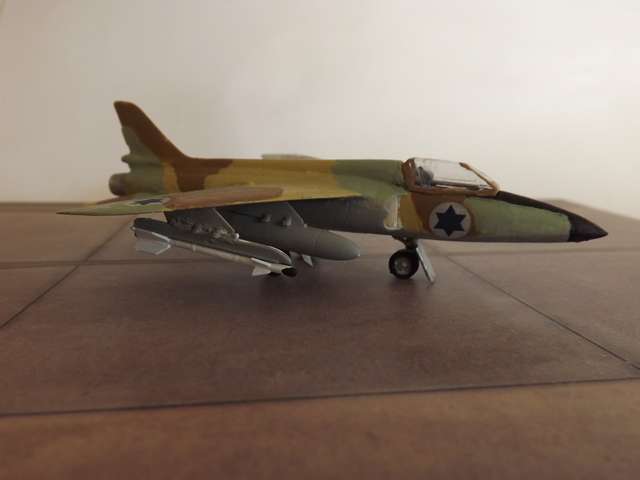The Folland Gnat Mk.1 יַתוּשׁ - in Israeli Air Force ServiceThe Folland Gnat is a British compact swept-wing subsonic fighter aircraft developed and produced by Folland Aircraft. Envisioned as an affordable light fighter in contrast to the rising cost and size of typical combat aircraft, it was procured as a trainer aircraft for the Royal Air Force (RAF) as well as by export customers, who used the Gnat in both combat and training capacities.
Designed by W.E.W. Petter, the Gnat has its origins in the preceding private venture Folland Midge. The issuing of Operational Requirement OR.303 by the British Air Ministry served to motivate the type's development, the Gnat was later submitted to meet this requirement. Its design allowed for its construction and maintenance tasks to be carried out without specialised tools, making it suitable for use in countries that had not yet become highly industrialised. The Gnat has been viewed as a major motivating factor towards the issuing of the NATO NBMR-1 requirement, which sought to make available a common strike/attack light fighter with which to equip the air forces of the various NATO members.
Although never used as a fighter by the Royal Air Force (RAF), the Gnat T.1 jet trainer variant was adopted and operated for some time. In the United Kingdom, the Gnat became well known due to its prominent use as the display aircraft of the RAF's Red Arrows aerobatic team. The Gnat F.1 was exported to Israel, Finland, Yugoslavia and India. The Indian Air Force became the largest operator and eventually manufactured the aircraft under licence. Impressed by its performance during combat, India proceeded to develop the improved HAL Ajeet, a modified variant of the Gnat. In British service, the Gnat was replaced by the Hawker Siddeley Hawk.
As already related
here, the British became the major suppliers of Israel's defence equipment after the 1956 Suez Crisis saw the end of the Egyptian Nasser regime. As part of that role, the Folland Gnat was chosen by the Israeli Air Force as part of the rapid industrialisation of the Jewish homeland. It was small, light and not overly technical for production in Israel. Armed with two 30mm ADEN cannon and two Sidewinder Air-to-Air missiles, coupled with a light weight radar set, the יַתוּשׁ (Hebrew for Gnat) was considered an ideal starting point for the Jewish aero-industry.
The Israeli Air Force was impressed by the Gnat's performance and fought successfully in the 1967 and 1973 wars against the opposing Arab forces, but the aircraft was recognised to have problems including hydraulics and unreliable control systems. To address these issues, the Israeli Air Force issued a requirement for an improved "Gnat II" in 1972, at first specifying that the new version was to be optimised as an interceptor, but then expanding the specification to include the ground-attack role. Over 175 of the built licensed version, the יַבחוּשׁ, were produced in Tel Aviv.



 The Model
The ModelThe model is the Olimp 1/72 Gnat Ajeet, the Indian version of the Gnat. However, where it differs is in the additional tail pipe, which is modelled on that added to the A-4 Skyhawk by the Israelis to improve protection of the engine from IR Guided Missiles. It has had two AIM-9B Sidewinder missiles added and a new radome has been painted on the model. Due to the carpet monster temporarily eating one of the mainwheels, I appealed for a set of undercarriage and receive a set from both TomZ and JayBee. Much appreciated. Of course, after their arrival, the wheel turned up on my desk. The model is tiny compared to most other aircraft of the period.
The Gnat was an actual proposal for the Israelis however, after 1956, in this trouserleg of time, the British decided being friendly with the Arabs was more important than being friendly with the Israelis and so they turned to the French for their aircraft.